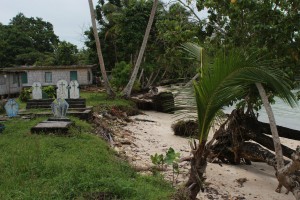For this round-table, I’ll start by giving an overview of a number of topics around the fascinating field of coastal ecosystems and coastal risk reduction. I’ll give an update on the activities of the SNAP Coastal Defenses Working Group and my work within this group, touch upon a closely coastal hazards assessment exercise in Papua New Guinea and an upcoming project on mangrove restoration for coastal resilience. I would like to combine this talk with a discussion on the challenges of small data; of bringing together diverse disciplines to bear on a single issue and; of finding ways to tie these disparate strands together.
For a sneak preview, here is an outline of some results from an almost (but never) complete meta-analysis:
We synthesize global evidence from field measurements of wave and storm surge reductions in natural coastal habitats and data on the costs and benefits of habitat restoration projects targeted at coastal protection. 76 field measurements show that coastal habitats can reduce wave heights up to 79% (or wave energy up to 96%). Coral reefs are the most effective habitats for wave reduction, followed by salt-marshes, mangroves and seagrass and kelp beds. In addition to waves, coastal mangrove and marsh wetlands can reduce storm surge heights by up to 70% over extents of several kilometers. We find a strong relationship between incident wave heights and wave reduction extents for all habitat types. Other critical biophysical parameters that influence wave reduction include habitat width (coral reefs and seagrass/kelp) and vegetation height (mangroves, salt-marshes). We also discuss the influence of a few engineering ratios (e.g. the ratio of wave height H over water depth, h) on wave reduction extents. We conduct the first global review of the costs and benefits of past and on-going habitat restoration projects targeted at coastal protection. The projects provide a wide range of coastal protection and risk reduction benefits including reductions in erosion, flood damage and engineering costs. Quantitative assessments of benefit-cost ratios and comparisons to engineering structures suggest that mangrove projects are the most cost-effective and are, on average, twice as cheap as comparable engineering structures for wave reduction.
Hope to see you there!

